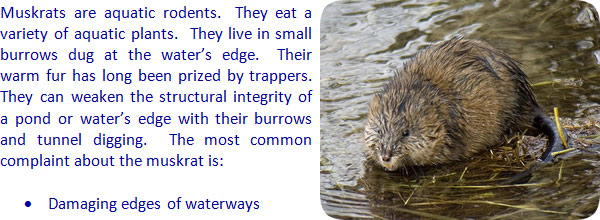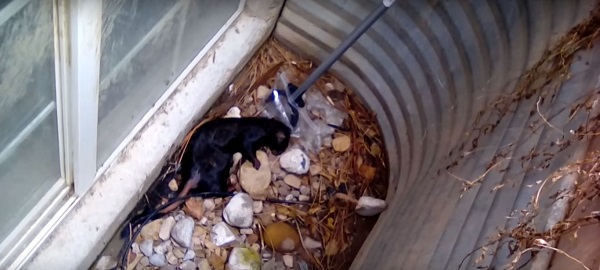 If you need muskrat help, click my Nationwide List of Muskrat Removal Experts for a pro near you.
How to Kill a Muskrat
If you need muskrat help, click my Nationwide List of Muskrat Removal Experts for a pro near you.
How to Kill a Muskrat
Many people that reside near ponds, lakes, rivers or streams may have an issue with muskrats. Muskrats are also known as river rats. These small animals are also known to destroy gardens, yards and leave extremely offensive odors behind during mating season. There are numerous things that people are able to do to control their muskrat issues.
Poisons
Poisoning a muskrat can be an effective method for killing muskrats, especially if there is more than one living in the area. People should make sure that they are not only using a poison that is federally or state approved, but placing the poison in a location where innocent animals will not have access to it.

Currently, the only poison that is federally approved is a 63 percent concentrate of zinc phosphide. Some states will allow for varying regulations and will allow people to use poisonous baits such as chlorophacinone, pivalyl, diphacinone and warfarin. You should contact your state’s wildlife agency to verify the current laws or regulations for poisons.
Shooting
Many people use their guns as a method for killing muskrats. If you are attempting to shoot muskrats, you will first need to make sure that you are able to safely do so. Make sure there are no fishers or hunters in the surrounding area. Shooting muskrats should be done during dusk or during the early morning after the first few hours of sunlight. This is when muskrats are usually the most active.
Trapping
There are several options available for trapping muskrats. Some traps are more humane than others. The most popular type of trap is known as a Conibear trap. This trap is also known as body trap. Traditional Conibear traps are designed with sharp stainless steel teeth that when triggered by the muskrat, springs the jaw forward to snap the muskrat’s neck and spine. Usually, this type of trap will instantly kill the muskrat. However, if the muskrat is positioned incorrectly in the trap it may cause a slow and painful death for the muskrat.
Another popular trap is a leghold trap. This trap is smaller than the Conibear trap and is designed to trap the muskrat’s leg causing it to starve to death. These traps also contact stainless steel teeth that snap closed to trap the animal.
More companies are beginning to manufacturer a leghold trap that they claim is more humane. The stainless steel teeth are replaced by materials that are synthetic in sections that are cushioned. These Conibear traps are more humane as they do not usually puncture the muskrat’s skin. These traps will still effectively capture the animal causing it to starve or drown to death.
These traps should be placed in three to four inches of water near the opening of the muskrat’s den or in the muskrat’s path.
Deadfall traps are traditional and simple, but are not always effective. This trap consists of a large, heavy object located above muskrat bait and propped with a pole or stick with a trigger mechanism. When the muskrat goes for the bait, it will usually hit the trigger mechanism to cause the large object to fall onto it and crush it.
A colony trap is usually the most humane type of animal trap. The colony trap is designed to safely and humanely trap the muskrat for it to be transported to another location. These traps work by attracting the muskrat with bait. When the muskrat enters the trap, the door closes behind it causing it to be captured.
Bait
There are many options available to bait a muskrat. There is a special liquid that has been specifically designed for the use of attracting muskrats. Carrots and apples are also effective for attracting a muskrat to a trap or specific location.
Pest Control
One of the most effective methods for getting rid of muskrats is by contacting your local pest control company. Most pest control facilities will be experts at trapping and destroying muskrats for a fee.
While there are numerous methods someone can use to destroy muskrats, there are very few instances when killing a muskrat is necessary. Safely trapping the muskrat in a humane trap and relocating the animal to another location is generally the best option to rid your garden or pond of the muskrat without causing it harm.